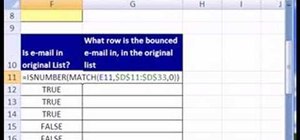
- #Excel for mac highlight row conditional formatting manual
- #Excel for mac highlight row conditional formatting code
- #Excel for mac highlight row conditional formatting mac
Just change the 3 to another row number if this is not the case. You said you were looking for the word "student" in column D, and I have assumed that row 3 is the first row that you want this conditional formatting to be applied. button to choose your conditional format (blue text with no fill). Select Use a formula to determine which cells to format, enter the formula as shown below, and then click the Format.
#Excel for mac highlight row conditional formatting mac
(Pictures taken from mix of Windows and Mac versions where possible.) Select the entire grid or table then Home | Conditional Formatting | New Rule.Ĭhoose ‘Use a formula to determine which cells to format’.Admittedly, this answer is based on the Windows version but it should still work for you. Get this one working and the rest will be a doddle. If you’re trying this for the first time, try this example first because it’s the basis for all the later variations. Now let’s put all this together to make the row and column highlighting from the first image in this article.
#Excel for mac highlight row conditional formatting code
(that’s why the VBA code is necessary, to make Excel recalculate the CELL() functions each time the selection changes). It’s not that scary, let’s break it down: CELL("col")=COLUMN()Ĭompares the column number of selected cell CELL(“col”) with the column of the cell to be formatted COLUMN(), if they’re the same the result is TRUE CELL("row")=ROW()Ĭompares the row number of selected cell CELL(“row”) with the row number of the cell to be formatted ROW(), if they’re the same the result is TRUEĮach of those tests returns a TRUE or FALSE, we want the formatting to apply when either case is True so both tests are wrapped in the OR function. The alternatives we’ll look at below are mostly about changing this formula: =OR(CELL("col")=COLUMN(),CELL("row")=ROW()) You can just copy/paste the formula below but if you understand how it works, it opens up a lot more possibilities. It’s an extension of an Office Watch trick from 2015 applying conditional formatting to other cells. If the cell is in the same row or column as the cell you’ve clicked in, the Conditional Formatting will be done. We’ll give Conditional Formatting a little formula that compares the currently selected cell location (row and column) with the cell to be formatted. Usually it’s to change the look of a cell based on the value in that cell. We’ve talked about Excel Conditional Formatting many times before. XLSM format which can be an issue in some organizations. The workbook will have to be saved in a macro-enabled.
:max_bytes(150000):strip_icc()/shade-alternate-rows-excel-R2-5c18dcdc4cedfd0001d49ff3.jpg)
Give the highlighting a try, if it becomes a problem, just remove the VBA code or comment out the Application.Calculate line.
#Excel for mac highlight row conditional formatting manual
Modern Excel is pretty smart about figuring which cells to re-calc when a manual Calculate is done. That’s true but probably not noticeable except for really large or complex worksheets. Downside of forcing calculationįorcing Excel to recalculate the worksheet for every cell movement will slow down the entire workbook. This little chunk of code has other uses, as you’ll see in the Headings of a selected cell option below. We don’t want that to happen when we’re cut/copy/pasting so the IF statement stops that. The code invokes the SelectionChange event then forces Excel to recalculate the worksheet. Private Sub Worksheet_SelectionChange(ByVal Target As Range)

This code goes into each worksheet that you want it to work in.


 0 kommentar(er)
0 kommentar(er)
